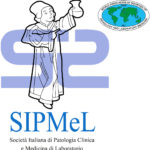
Do not measure serum cortisol and plasma corticotropin (ACTH) at random times during the day as first-line tests in suspected Cushing’s syndrome.
For screening of Cushing’s syndrome it is recommended to use one of the following three tests: urinary cortisol (at least two 24-hour collections), nocturnal salivary cortisol (two samples on two different days), serum cortisol after overnight dexamethasone 1 mg suppression test (oDST). This approach is strongly supported by authoritative scientific societies and is aligned with up-to-date and Evidence-Based literature.
Sources
1. Nieman LK, Biller BM, Findling JW, et al. The diagnosis of Cushing's syndrome: an Endocrine Society Clinical Practice Guideline. J Clin Endocrinol Metab 2008; 93: 1526-40. DOI: 10.1210/jc.2008-0125.
2. D’Aurizio F, Tozzoli R, Dorizzi RM, et al. La diagnostica di laboratorio delle malattie del surrene. Raccomandazioni pratiche per la sindrome di Cushing. Riv Ital Med Lab 2015; 11: 132-49. DOI: 10.1007/s13631-015-0088-0
3. Galm BP, Qiao N, Klibanski A, et al. Accuracy of laboratory tests for the diagnosis of Cushing syndrome. J Clin Endocrinol Metab 2020; 105:2081–94. DOI: 10.1210/clinem/dgaa105.
4. Braun LT, Vogel F, Zopp S, et al. Whom Should We Screen for Cushing Syndrome? The Endocrine Society Practice guideline recommendations 2008 revisited. J Clin Endocrinol Metab 2022;107: e3723-30. DOI: 10.1210/clinem/dgac379.
5. Centre de référence des maladies rares de la surrénale. Extraite du Protocole National de Diagnostic et de Soins (PNDS) Syndrome de Cushing Janvier 2023 [Internet] Available from: https://www.has-sante.fr/upload/docs/application/pdf/2023-01/synthese_mg_syndrome_de_cushing.pdf (last accessed March 2024).
Download
PDFAttention. Please note that these items are provided only for information and are not intended as a substitute for consultation with a clinician. Patients with any specific questions about the items on this list or their individual situation should consult their clinician.


Recent Comments